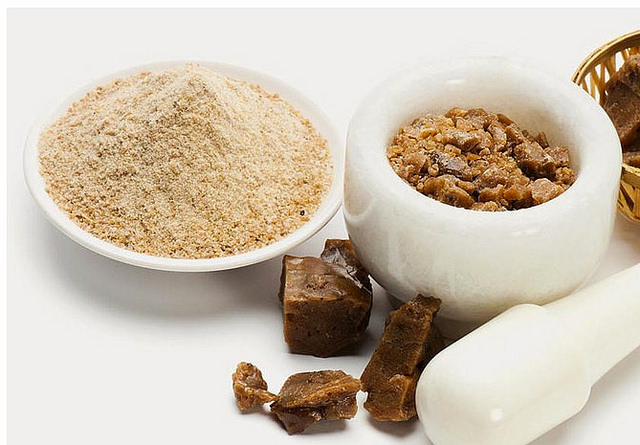Asafoetida

About
A spice used as digestive aid. It has an extremely strong odor and must be kept in airtight containers. It becomes more mild when cooked however, with a taste like sautéed onion and garlic. Although not native to India, asafoetida has for ages been an essential part of Indian cookery and medicine. It was also believed to enhance the musicality of the voice. It is said that in the days of the Mughal aristocracy the court singers of Agra and Delhi would wake before dawn eat a spoonful of asafoetida with butter and practice on the banks of the river Yamuna. Asafoetida gets its name from the Persian aza or resin and the Latin foetidus or stinking. Due to its offensive smell it is also sometimes referred to as devils dung. How it grows: Asafoetida is the dried latex from the rhizomes of several species of giant fennel. It is grown chiefly in Iran and Afghanistan from where it is exported to the rest of the world. In India it is cultivated in Kashmir. Asafoetida is the product of a tail smelly perennial herb with strong carrot-shaped roots. The 2-4m tall plant bears fine leaves and yellow flowers. In March or April just before flowering the stalks are cut close to the root. A milky liquid oozes out which dries to form asafoetida. This is collected and a fresh cut is made. This procedure lasts for about 3 months from the first incision by which time the plant has yielded up to 1kg of resin and the root has dried up. Appearance and taste: Fresh asafoetida is whitish and solid and gradually turns pink to reddish brown on exposure to oxygen. It is ochre when sold commercially and the most widely used form is the fine yellow powder or granules. Foetida has a pungent unpleasant smell quite like that of pickled eggs due to the presence of sulphur compounds. On its own it tastes awful but it is added to most indian savouries as it can complete the flavour of a dish. Buying and storing: Most commonly available boxed as powder or as granules asafoetida is also sold as a hard lump that needs to be crushed. It is best to buv a branded box of powder it is airtight and keeps the sulphurous odour of the spice locked in. Having a strong flavour asafoetida keeps well for up to a year. Medicinal and other uses: Asafoetida is said to help flatulence and it is also prescribed for respiratory problems like whooping cough and asthma. Some European cultures believe that a small piece of asafoetida tied around a child's neck will protect it from disease the fetid smell of the gum acting as a deterrent to germs. Despite its overpowering smell asafoetida is used in some perfumes. Culinary uses: Its powerful aroma complements lentils vegetables and pickles. Asafoetida is used widely in south India a surprising fact considering that it does not grow there at all. It is always used in small quantities a tiny pinch added to hot oil before the addition of the other ingredients is enough to flavour a dish for 4. In India asafoetida is always fried to calm its overpowering smell.
Information
Physical Description
Paste like texture
Tasting Notes
Selecting and Buying
Preparation and Use
Usually in Chat Masala and in Vegatable and Pulses dishes. Hindu community is the largest consummer as they are vegetarian









